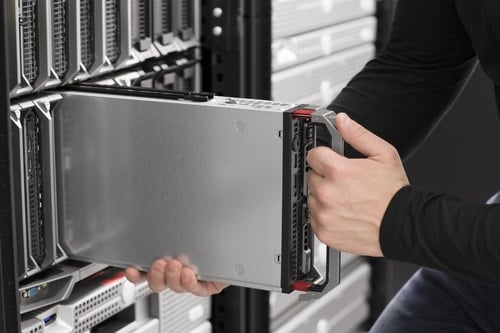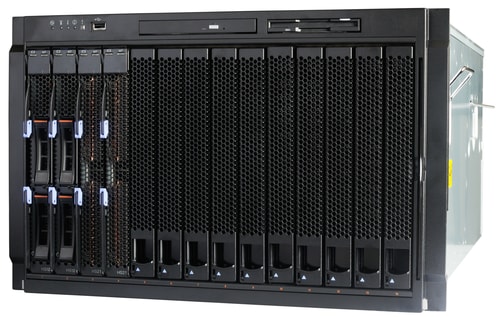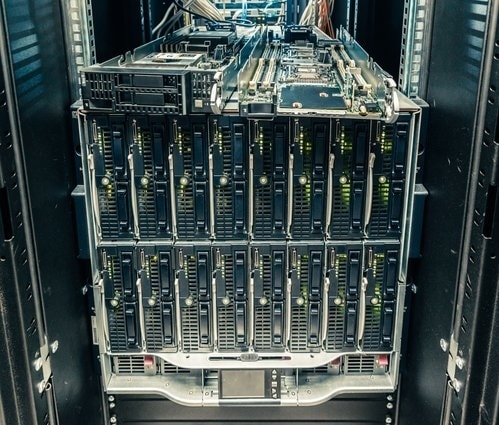
5 Holiday Shopping Tricks To Keep You Sane
December 14, 2015
This Week in Getting Hacked: Control the Internet Edition
December 16, 2015Maybe a blade server is an option you never thought of before, perhaps you’re interested in blade server hosting, but do not have the required infrastructure.
Maybe you have no idea what I’m talking about and would like a little more explanation. Well, if blade servers are the best fit for you and you didn’t know it, you could be losing money.
Let’s see what they’re all about.
What Is a Blade Server?
Blade servers are an easy-to-use, fast, power-efficient modular solution which provides exemplary performance, equal to or greater than, standard rack-mount servers. So, how do blade servers work?

The blade server is designed to offer uncompromising performance while lessening your need for cooling and space. While standard rack-mount servers can run on a power cord and a network cable, blade servers are designed to save space, minimize power costs, among other applications. Despite its compromises, blade servers still have all the required functionality to be considered a computer.
A blade chassis, which houses multiple blade servers, supplies power, networking, cooling, etc. Together, blade servers and blade chassis form the blade system.
While traditional servers have limitations in regards to size (e.g. the minimum for one rack unit—1U—is 19″ tall and 1.75″ tall), blade servers do not have these limitations. The most common construction of rack-mount servers is 42U per cabinet, which caps the amount of devices able to fit inside.
This is the predominant benefit of a blade server: reducing size requirements while maintaining performance. Quantities of up to 180 servers per blade system have been recorded—that’s 1440 servers per rack! For a more visual representation of blade servers vs rack servers, watch the video below: https://www.youtube.com/embed/RQl8daewS74
What Are Blade Servers Advantages and Disadvantages?
Space, power, and cooling should be your major focus in deciding whether or not to consider blade servers or conventional rack servers. Be aware that the server may not suite your needs fully.

Here are some pros and cons of blade servers:
Advantages:
- Density — One can fit a greater number of servers per rack than traditional rack servers, so you save on space.
- Cables — Blade Chassis typically have dedicated switch slots, which will greatly reduce the number of cables for the number of servers.
- Manageability — A blade server generally come with integrated management tools.
- Scalability — Adding or swapping additional servers is simple and quick, rather than messing with the rails of a rack server.
- Utility Savings — Space, power, and cooling costs are considerably less per storage unit.
Disadvantages:
- Flexibility — Rack servers generally have PCIe slots which allow for greater adaptability rather than blade servers which typically have proprietary slots.
- Upfront Cost — Usually costs more upfront.
- Options — They do not have as many drives or options per server
- Chassis Size — Blade chassis are massive and can be difficult to rack.
How Can a Blade Chassis Help Me?
Adoption of blade servers has been a relatively slow process. Proponents of the hardware catch up with the efficiency of higher-density servers. When the data is more concentrated, as lesser amount of energy is used. While the evolution of silicon technology has paved the way for a more effective and compact processors, continuing requirement for treatment also increase.

Simply speaking, more treatment is fit into identical spaces. With more computational power that’s obtainable, more powerful applications are matured using the available computing power to do so.
This extra power creates heat, which ought to be removed. And that’s what the blade server does for you. It effectively reduces heat (cooling and power costs), without sacrificing processing power.
For in-rack cooling solutions, there is significant additional infrastructure required. This infrastructure is an operation risk because of things like increased presence of fluid-carrying pipes near the servers—or the requirement that maintenance is performed on these cooling systems ought to be completed on the rack.
When dealing with mechanical refrigeration systems using refrigerant or liquid under pressure, and something goes wrong, it cannot be easily containable. What would initially be included in the mechanical equipment rooms would instead be drawn to the racks themselves.
So, not only would would the server save upfront costs on cooling and power, but also the hidden-costs of a unfortunate heat-related mechanical failure.
What Type of Workload is a Blade Server Best Suited For?
If you have decided that a blade server is the right choice for you, the next step is to know what they are best suited to do.
- Virtual Desktop — the server virtual desktop reaches all users from basic to advanced (who might require high-graphical performance).
- Big Data Applications — includes database and transaction processing supporting a wide range of solutions.
- Webpage Serving & Caching
- SSL Encryption of Web Communication
- Streaming Audio & Video
- Popular Operating System Support
Basically, the hardware can be whatever you want it to be—just like a normal rack server. For a more technical solution, check out how HP builds their blade servers.
